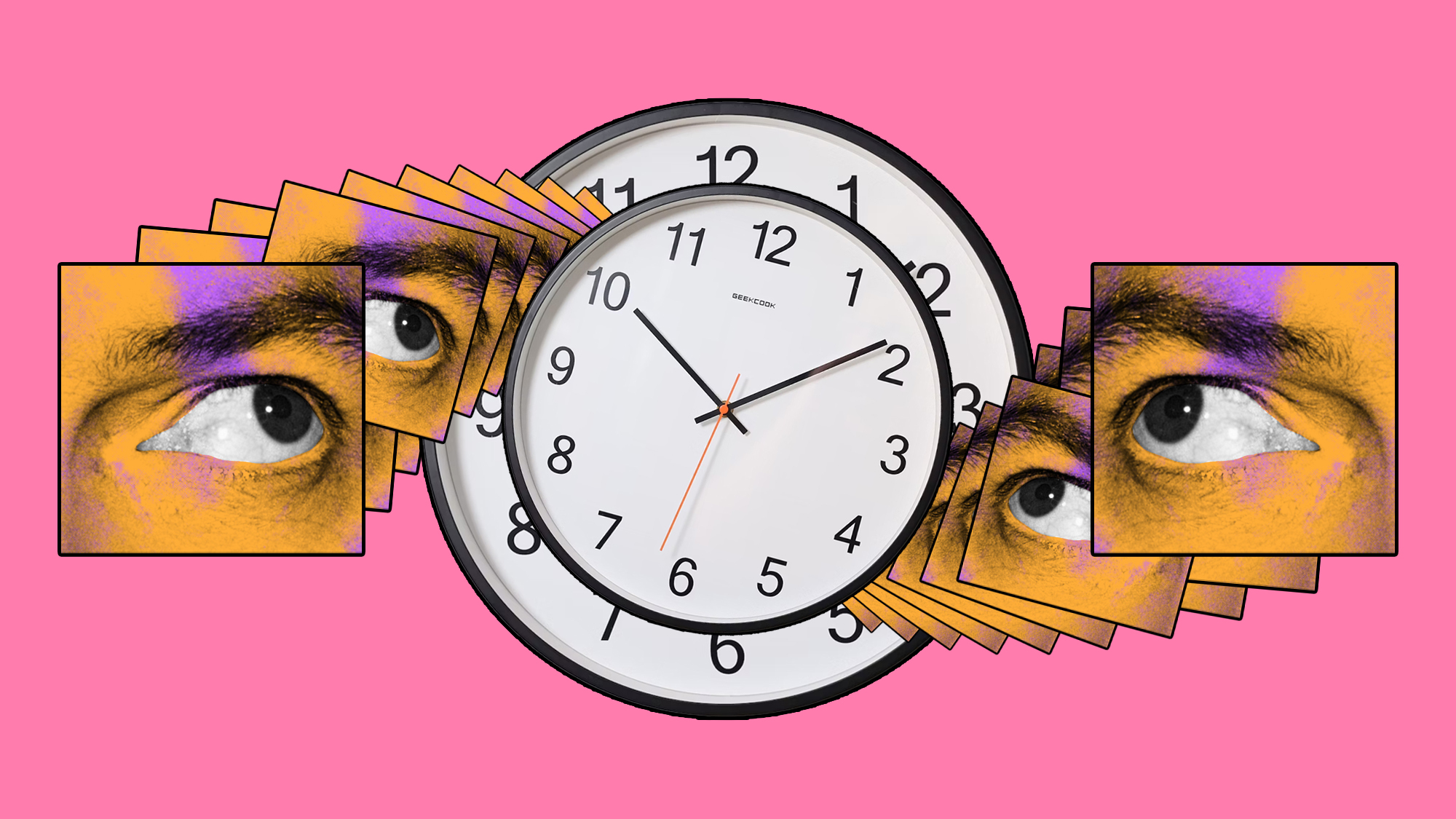In Head Trip, PopSci explores the relationship between our brains, our senses, and the strange things that happen in between.
SURE, TIME FLIES flies when you’re having fun. Time also seems to stretch out like an old rubber band when you’re stuck in endless back-to-back Zoom work meetings. The latter is an example of chronostasis, a phenomenon in which time appears to pass more slowly than it actually does. A visual example of chronostasis is the stopped clock illusion, which is induced by shifting one’s gaze abruptly to an old-fashioned ticking clock. This action can result in the clock’s second hand appearing to remain stationary for more than a second.
Kielan Yarrow, reader in psychology at the University of London, explains that the key ingredient in the stopped clock illusion—and chronostasis generally—is a rapid movement of eyes from one object to another. Such movements are called “saccades.” Yarrow explains that they can present problems for our brains.
“Whenever you move your eyes,” he says, “it’s rather like moving the camera on your phone.” If you move your phone quickly enough, he says, “you can get a big motion smear, and the whole world appears to jump position.” During a rapid eye movement, there are gaps in the visual information our eyes receive. Our brains respond by “filling in” those gaps to avoid motion blur.
The stopped clock illusion exposes the limits of this retrospective reconstruction. If the clock ticks during the saccade, we do not “see” this tick taking place, because the brain’s reconstruction is based on what it sees at the end of the saccade—at which point the clock has already ticked. The result is that the second hand can seem to have been stationary when it was actually in motion. But since the visual information of the moving second hand was missing during our rapid gaze shift, the brain predicts its “past” position based on the best information available—that is, the second hand’s already-ticked place on the clock.
Nevertheless, it’s remarkable that in the vast majority of cases, the brain manages to compensate for lost or incomplete information, even if it is, in a way, guessing. “I think a useful way to think about a lot of these kinds of illusions is to take what’s now often described as a Bayesian view,” Yarrow says. “The idea behind [this] is that what you see at any given time is to some degree uncertain, so the best thing to do is to average together what you see right now with what you think you should have seen. Your past history of experience acts like a kind of baseline, and you generate biases towards that history.”
It’s these biases—or, more accurately, disparities between these biases and reality—that often manifest as illusions. However, as Yarrow points out, “From a broader perspective, [the Bayesian approach] is quite adaptive. If what you see right now is subject to a lot of sensory noise,”—i.e., incomplete or contradictory information—“then on average, you’ll end up getting closer to the truth if you incorporate realistic expectations into that [sensory information]. And it’s a particularly noisy time when you move your eyes.”
These expectations also help in readjusting to reality after experiencing an illusion, as demonstrated by a particularly fascinating experiment that involved subjects playing video games. At first, unbeknownst to subjects, there was a short delay between their inputs (i.e., the pressing of buttons on the controller) and the effects of those inputs being shown on screen. This delay was short enough not to be noticeable, and it seems participants’ brains compensated for it, meaning that participants perceived that their actions were actually manifesting on screen as soon as they pressed their controller buttons. This seems to be an adaptive response: As the experimenters’ paper puts it, “Sensory events appearing at a consistent delay after motor actions are interpreted as consequences of those actions, and the brain recalibrates timing judgments to make them consistent with a prior expectation that sensory feedback will follow motor actions without delay.”
In the experiment, however, the delay was removed abruptly, and subjects reported feeling that their on-screen actions preceded their inputs. As in the stopped clock illusion, the brain’s expectations came into conflict with reality, resulting in what subjects experienced as an illusion of distorted time.
Yarrow notes that these effects are generally short-lived: “You have to keep topping people up with out-of-sync experience. Otherwise, they readapt back very quickly.” Such experiments do, however, make it clear that our perception of time is not objective. Yarrow says that many things can affect how we experience time: “Whether something is moving, how big it is—these all seem to bias how fast time seems to pass.” Ultimately, however, our brains are resilient, and we snap quickly back to reality. Thankfully. Who wants to get stuck in time?
Read more PopSci+ stories.

